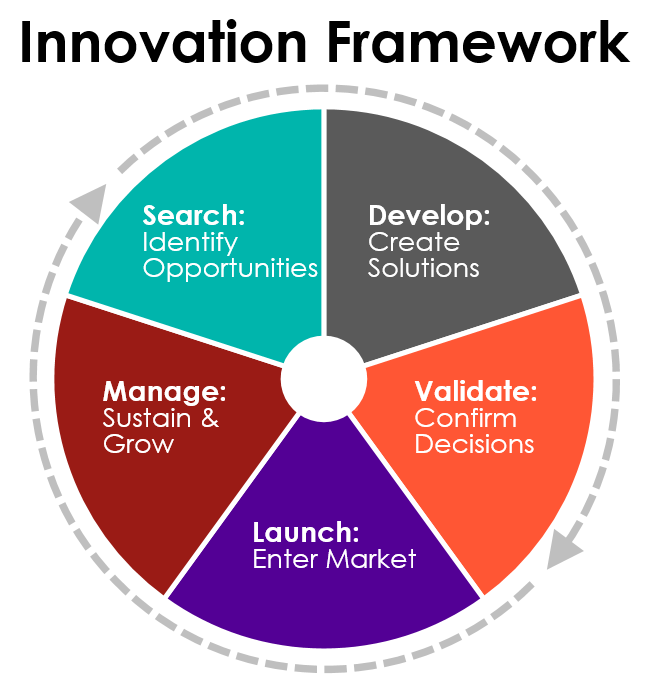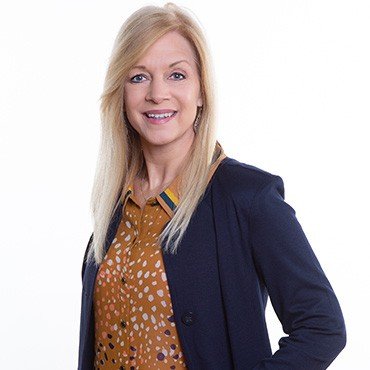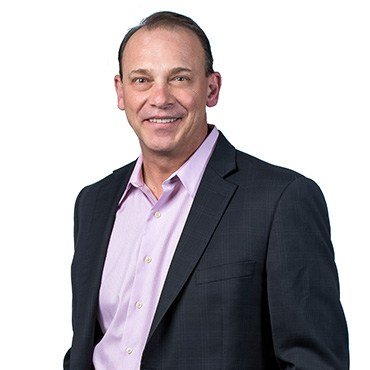
Part Two of Our Five-Part Guide to Successful Innovation
This is the second post of a five-part blog series about how businesses can innovate and adjust to market change using a five-phase framework for innovation. We break down one phase per blog, laying out the business challenges that typically align with each phase and the various ways to address them. In the first blog, we explored how to identify underlying consumer pain points and areas of opportunities for a brand to explore in the Search phase.
Now that you have uncovered meaningful areas of opportunities to grow your business in the Search phase, it’s time to move into the Develop phase to generate ideas, develop concepts and construct relevant solutions that your company can provide to move consumers toward their ideal, desired state of being.

Phase Two of Innovation: Develop—Creating Solutions
In this phase, you will dig into answering the following types of questions:
- What can we do to address the identified gaps and opportunities in meaningful and unique ways for consumers?
- How might we do this? What would that look like?
You might feel stumped about how to come up with creative ideas for solutions that go beyond simple, incremental changes to existing products and services—especially if your R&D team feels depleted. This is where Creatives come into play.
Working with Creatives to Spur Innovative Thinking
Involving the right types of people—such as Creatives—at the right points along the innovation journey makes all the difference during this phase of the process.
Creatives are people who can generate lots of highly unique ideas for new innovative products and services. Regardless of whether they have creative abilities in “traditional” areas such as art, design or music, Creatives generally have a wide breadth of interests and can transfer their highly unique abilities across categories and industries.
Here are some Develop phase issues our clients faced, what we did to help them and how we involved Creatives.
Example #1: Creating Innovative Solutions with Facilities Managers
One of the world’s largest manufacturers and distributors of paper products and dispensers wanted to answer the needs of high-volume facilities managers—particularly those who oversee sports arenas, entertainment venues and office buildings. One way of doing this was for the company to update the way in which toilet paper was dispensed, so it challenged us to generate unique ideas for its product development pipeline.
We began by identifying facilities directors and maintenance coordinators who exhibited high levels of creativity and invited them to a multiday, virtual idea-generation session. Each day, we tackled a different problem associated with high-volume bathrooms—such as paper waste, flooding and vandalism—and came up with new ways to address each one. Armed with more than 500 starter ideas, we organized them into themes, such as “short-term storage,” that served as core development platforms from which we more fully developed two to three concepts for each resulting theme. We shared these solution concepts with a small group of facilities managers and incorporated their feedback into our final refinement of the concepts for the client.
Example #2: Working with Creatives to Reimagine the Purchase Experience
A North American manufacturer and marketer of commercial and residential kitchen and bathroom fixtures realized it needed to address consumer pain points inherent in the purchase process to increase sales. The company’s biggest challenge was the inability for consumers to experience its products prior to buying and installing them. As its long-time innovation partner, the company turned to us for unique ideas and solutions to this problem.
We used a proprietary screening method to recruit Creatives from across the US and then sent them on in-person and virtual shopping assignments designed to lend fresh perspective around the purchase process. After, we conducted a two-day, virtual co-creation session involving the Creatives and members of our client team. We generated nearly 100 ideas for new ways in which consumers could experience how the company’s products felt and worked prior to making a purchase. Our client selected 10 ideas it felt held the most promise, which we then developed into more defined concepts for our client to use in internal discussions and as platforms from which to design purchase experiences.
We provided both clients with a fresh outlook by identifying and including imaginative consumers who bring new perspectives, options and ideas.
If you are looking for ways to generate new and creative solutions that will meet the needs of consumers, you may consider engaging a partner to help you determine the best way to do so and when to involve consumers. Escalent takes into account your specific challenge, industry and company objectives to help you identify the right types of consumers to involve in the creative process at the right time. We will help you fill your pipeline with innovative products and services that will move the needle for consumers and your business growth.
Next: We explore how to test, confirm and refine relevant solutions in the Validate phase. The Validate phase will help you test your new solutions to make sure they hit the mark with consumers as well as determine how to refine them for maximum success.
To learn more about how Escalent can help you innovate, send us a note.










